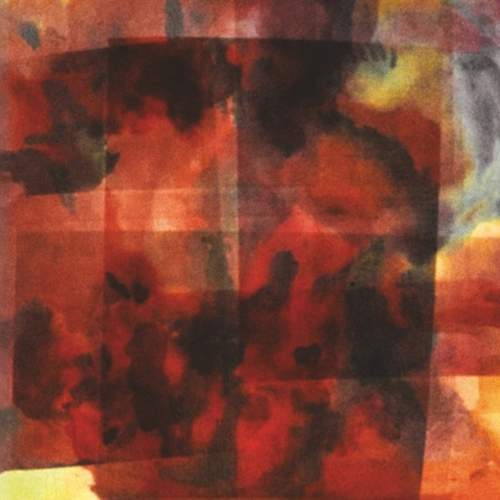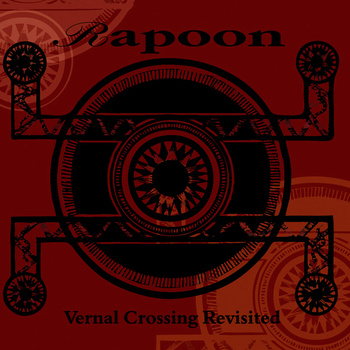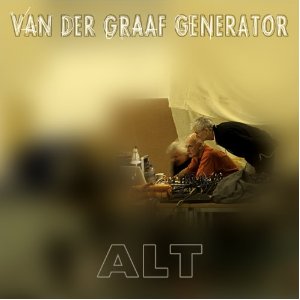H: – Group Tracks
Label: Black + White Records Format:12″
“Bushwacker” took a little time to grow on me. My first thoughts were don`t do much does it, then I realised just what this slab’s purpose is. It builds up & up & up. This isn`t the kind of record you`d consider listening to on its own. It begs for a set of decks, and makes a killing set opener. By the time Side A is over the janitors will be mopping brains off the ceiling, it’s rush hour alright. Side B was a little more immediate. “The Forge” rocks, plain and simple. Sleek minimal Techno with a nasty whining noise phasing in and out. “Tone Defeat” is just as the name suggests. Proof that these guys like their Mills/Surgeon type stuff. The melody, if it can be called that, is ugly and atonal (and that’s a compliment from me.)
-Alaric Pether-
Alexander Hacke – Sanctuary
Label: Koolarrow Format: CD
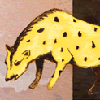 Being the first proper solo album from Einstërzende Neubauten‘s rockin’ bassist, and featuring members of Swans, Foetus, The Jesus Lizard, The Leather Nun (!), Neubauten themselves and many more besides, this CD came with high expectations – and didn’t disappoint. A healthy eleven tracks long, It’s been constructed in an off-line manner by Alex Hacke after collecting various recordings of friends and collaborators around the world, editing and overdubbing and playing them to each other, yet sounds remarkably consistent and impressively live.
Being the first proper solo album from Einstërzende Neubauten‘s rockin’ bassist, and featuring members of Swans, Foetus, The Jesus Lizard, The Leather Nun (!), Neubauten themselves and many more besides, this CD came with high expectations – and didn’t disappoint. A healthy eleven tracks long, It’s been constructed in an off-line manner by Alex Hacke after collecting various recordings of friends and collaborators around the world, editing and overdubbing and playing them to each other, yet sounds remarkably consistent and impressively live.
“Sister” comes closest to typical Neubauten territory, containing a cheeky reference to “Perpetuum Mobile”, but you get the impression that what’s more important here is all the other stuff Hacke’s into but doesn’t usually get a chance to explore. It’s been many years since Crime & the City Solution after all. “Seven” and the epic title track lend weight to the suspicion that he’s a bit of a Metalhead at heart, with the latter sustaining a grinding wall of noise guitar for about 13 minutes that would make Kevin Martin‘s old band GOD proud, while the former hits a much more stoned retro kind of groove.
But it’s not all chugga chugga by any means. The chaotic Funk of “All American Happy Hour” features an anonymous guitarist pulling off a fine impersonation of Sugarhill/On-U Sound genius Skip McDonald; even further removed is “Per Sempre Butterfly”, a torch song in Italian, which features a moving vocal performance by Gianna Nannini, and is one of my favourites. Giving it a good run for its money though is “Sugarpie”, a rambling bluesy soliloquy in the mode of Tom Waits about the preparations for a carney-esque funeral. Along with much of the album, actually, there’s an impressively authentic touch of dirty, sleazy, rusting Americana here – good going for a Berliner.
-Andrew Clegg-
Half Man Half Biscuit – Achtung Bono
Label: Probe Plus Format: CD
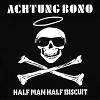 And they’re back. Nigel Blackwell‘s lads are here to give anyone, and anything, they think worthy a damn good kicking. And they’ll do it catchily too, and with some great jokes. Quite some expectation, and opener “Restless Legs”, while funny, seems remarkable targetless. After this breezy opening, though, we get one of the two most acerbic tracks on the album, “CORGI Registered Friends”, a pop-Punk stormer which sees Nigel firing his arrows of pure vitriol into the middle-class idyll: “You call Glastonbury ‘Glasto’/You’d like to go there one day/When they’ve put un the guntowers/To keep the hippies away”. The way he enunciates the line “Ralph’s in Brize Norton” is a thing of joy in itself- never has spite been quite so funny.
And they’re back. Nigel Blackwell‘s lads are here to give anyone, and anything, they think worthy a damn good kicking. And they’ll do it catchily too, and with some great jokes. Quite some expectation, and opener “Restless Legs”, while funny, seems remarkable targetless. After this breezy opening, though, we get one of the two most acerbic tracks on the album, “CORGI Registered Friends”, a pop-Punk stormer which sees Nigel firing his arrows of pure vitriol into the middle-class idyll: “You call Glastonbury ‘Glasto’/You’d like to go there one day/When they’ve put un the guntowers/To keep the hippies away”. The way he enunciates the line “Ralph’s in Brize Norton” is a thing of joy in itself- never has spite been quite so funny.
Except when it’s aimed at Pete Doherty, the headline-grabbing junky no-mark once of The Libertines. Who is the target of the other standout track, the catchily-titled (and catchy) “Shit Arm, Bad Tattoo”- “If you’re gonna quote from the Book of Revelation/Don’t go calling it the Book of Revelations/There’s no ‘s’., it’s the Book of Revelation/As revealed to St John The Divine”. I would say it was a damn sight better than Babyshambles, but that would be damning with faint praise. Instead I’ll say it’s ace, and a contender for my favourite song of the year so far, tearing the little fuck the new one he so richly deserves. It’s not all hatred and sneering, though- uncharacteristically, they come up with the strangely touching (yet still savagely funny) “For What Is Chatteris…” (“What’s Chatteris if you’re not there?/I may as well be in Ely or St Ives”) Like all Half Man Half Biscuit stuff, though, you’re not gonna get everything out of it on the first listen. As with the music of The Birthday Party, or a particularly amusing disease, it needs to be lived with for a while to discover its full armoury.
An instant attention-grabber, though, merely on the strength of the title (and the wondrous liner photos) is “Joy Division Oven Gloves”. Apparently a satire on consumerism, it’s perversely made my life feel somewhat incomplete without a pair of my own. To give away all the jokes would, however, ruin the album. Suffice it to say, I’d put Blackwell up there with Morrissey in the “cruel yet funny” school of Wildean humour. But I’d bung him up a couple of notches for missing out the whole “self-importance” part. He’s clearly one of the best lyricists in the country, with his Mark E Smith-style “bored yet angry” delivery having lost none of its power over the years, and still capable of the kind of one-liners you’d have expected him to run out of years ago (my personal favourite this time round being “Is your child hyperactive? Or is he, perhaps, a twat?”. Fittingly, Achtung Bono is dedicated to long-time Half Man Half Biscuit champion John Peel. It’s a shame he didn’t live to hear it.
-Fuckin’ ‘ell, it’s Deuteronemu 90210!-
Chris Halliwell – Blind Hands Read the Written Body
Label: Sous Rature Format: CD
Drawn from the deeper recesses of prepared guitar, effects and hard-disc editor, Blind Hands Read The Written Body seeps slowly out of the speakers with the same sense of Zen expectancy as Main once produced. Chris Halliwell is intent on exploring not only the smallest fragments of the sounds he generates with his guitar, but with his hands and the implements he uses to scratch, strum and rub the instrument through the opening title track. As the piece builds, the listener becomes drawn into a close-up of the process, simultaneously distanced from (by abstraction) and engaged with (through recognition) the act of sound production itself.
Stillness dominates many tracks in a suspended state of gradual release – the automated sound of fan-brushed strings in “An Unexploded Dream” hold hypnotic fascination as bass tones accrete around a cycling mantric flow of chimes and drones. The occasion fuzzy intrusion serve to startle the unwarily somnolent into attention in an audio Zen-swipe around the head of the easily distracted. At eighteen and a half minutes, this track easily bears setting to loop for a background hum – as does most of the rest of the CD.
By contrast, “Music For A Dancer” enters into more disjointed Concrète territory, slipping fragmented melodies and sparse electronic pulses before the briefest of guitar Gamelans; “Grainy Voices” is an unsettling smear of barely recognisable microphonic processing; and the closing “Chora” delivers the Ambient goods. The slowly- expanding drone builds satisfyingly into a plateau of feedback and ominous undertones, released-steam effects and an urgently unwinding clockwork loop, before receding almost imperceptibly back into the machine hum. With a gradual whine to top things off, the sound of one guitar subtly convolved fades out into silence, and mundanity returns.
-Antron S. Meister-
Chris Halliwell
– The Erasing Angel Spinning Backwards
– On Crystal Night
– First The World Turns Monochrome
Label: Sous Rature Format: CD
Ever productive, improvisor and composer Chris Halliwell has surpassed himself this time, releasing not just two albums’ but also an EP’s worth of new material via his own Sous Rature label, operating from the heart of the East End of London. The Erasing Angel Spinning Backwards holds nearly an hour’s worth of material, organised as a three-part work which opens as a slow accretion of restful hypnotic drones which drift minutely into omnipresence. Part 2 features processed clarinet work played by occasional live collaborator Seth Ayyaz (also one-third of noisy improv crew Phage), with the sound of the instrument, including the clicks of the keys and stops, cycling off into a lengthy switchback ride of rounds, loops and self-entwining delay effects. Before long, the identifiable clarinet tones are submerged in redoubling, slightly amorphous, skeins of echo and abstraction, eventually emerging as a complex interleaving of the sampled real-time performance and the studio mixing desk.
Part 3 makes off into noisier trajectories, with jagged bowed sounds layered across each other, struggling for assertion briefly before settling into a discordant microtonal miasma. A combination of listening to Gnomic folk musicians tuning up for an anti-barn-dance (swung widdershins slowly while invoking earth elementals) and a less stately Tony Conrad piece, part 3 is brought to an album- closing coda of single piano notes to relieve the build-up of accumulated buzzing tension.
On Crystal Night is by contrast recorded at wilfully low volume, encouraging the listener to turn it up for audibility’s sake – and maybe as a test of the capacities of their audio reproduction equiment too. Tracks 1-4 are organised as the “On Crystal Night” quartet, with each part crisply sliding around and over the edges of pure noise, glitching and scratching out a windswept electonic landscape. Deep in the mix are texts spoken by painter Annabel Kapp, talking of decay and loss, making a quiet contribution to the icy, distanced dissection of genocidal Modernist memories On Crytal Night point back at. By the quartet’s conclusion, the reverberating klang of rattled piano cages and disturbed violin bones has scored deep aural gouges, eerily redolent of the existential confusion of persecution, with Kapp emerging again through a squall of grimy eardrum-buzz distortion, squealing strings and intermittent micro-sounds in “Tears”.
“R/” and “S/” complete the recording as a pair of tonal miniatures, pushing at the fringes of treble and bass, all liquid crackles and high-pitched curlicues mixed low, low down into the the depths of the CD bitstream, and an on/off switchback through deconstructed piano and woodblock fragments, all in the best stomach-churning and mind-wobbling style. On Crystal Night is a challenging recording in many ways, not least in its playfully obscure sound levels and conqsequent foregounding of process and the resulting listener interactivity with the CD and the deeper thresholds of volume control.
First The World Turns Monochrome also features Kapp intoning stories of near-paranoid urban indecision and fragmented Holocaustic legacies in a curiously affectless manner as Halliwell works out a series of semi-acoustic, reverberatingly-feedback’d or plucked and bowed to distraction, semi-tonal guitar, harmonica and sample numbers.The mood here is half-playful, half anarchic spasm, with curious reference points to The Velvet Underground as well as John Cage and the more distrait signals of James Havoc‘s eccentric Church Of Raism along the way. By contrast to most of his recorded output, First The World Turns Monochrome (the title taken from the swooning, scraping, scratching, rustling and quite haunting “Needles”) contains pieces recognisable as songs or tunes (in the loosest possible sense) among the improvisational miniatures, and as befits an EP, is about as close to “accessible” as Chris Halliwell may care to venture.
-Antron S. Meister-
Chris Halliwell – What Dark Is This
Label: Sous Rature Format: CD-R
Continuing his examination of the microscopic and microtonal possibilities of music, Chris Halliwell‘s second album in the space of six months opens with a slowly evolving transition from the most delicate of prepared-guitar plucks and struck-cymbal chimes into a fizzing serpent’s tail of electronic firework fuzz. The electro-acoustics are satisfying enough in themselves, but what engages the most here is the unfolding of a closely-focussed crawl over the surfaces of the half-hinted sound sources Halliwell deploys.
Taking an approach which demands either environment-overcoming levels of sound, or headphones, there are some nasty surprises awaiting among the seemingly random array of snapped crackes and scurrying pops. Taking the extremes of infinitesimal scratch-sound up to Merzbow-style chaostrophy, via false starts (which only apply if taken as being part of an entirely a linear sytem, which this may not be), interruptions and skull-scraping noise spasms, also takes some doing if it’s to be made listenable, and What Dark Is This acheives an angular presence which fades into and out of focus. Laying traps for the listener certainly is a way to ensue some measure of concentration – the headfirst plunge into the noisy quagmire of “From The Nerve Meter” when it arrives is a startling tooth-grinder which would be something to see infliced on an unsuspecting (and possibly soon-departed) live audience
After the electrical storm subsides, the appositely-titled “Plateaux Phase” takes refuge in the early-morning sounds of Hyde Park’s aquatic fowl population, but not as mere field recording. Clipped, filtered voice fragments make occasioanl half-imagined vocalisations while a steadily defused set of subtle manipualtions, acoustic and electronic, are applied to the central ambience. As environmental sound recordings go, this is fairly evocative, though not necassarily of a time or place, but of a condition of Zen contemplation acheived both in spite of and within the extraneous noise of cars, engines, bass tones and other less discernable sounds. The more post-Modern may care to experiment with placing What Dark Is This on a portable stereo, and playing it to the ducks; those in need of stimulation and surprise might like to try a darkened room – either could produce interesting results.
-Antron S. Meister-
HammerFall – Renegade
Label: Nuclear Blast Format: CD
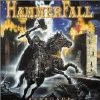 Slow, highly dramatic Metal that reminds one highly of the days of early Judas Priest, especially in the epic storytelling of the songs (including, but not restricted to, protecting the Olympic torch, sword fighting, and running away from stuff). While the lead vocalist doesn’t quite have the range of the young Halford, that long drawn-out, ballady quality is definitely there. Plenty of wailing guitar solos, here, too, complimented nicely by a cool drummer that must moonlight as a metronome.
Slow, highly dramatic Metal that reminds one highly of the days of early Judas Priest, especially in the epic storytelling of the songs (including, but not restricted to, protecting the Olympic torch, sword fighting, and running away from stuff). While the lead vocalist doesn’t quite have the range of the young Halford, that long drawn-out, ballady quality is definitely there. Plenty of wailing guitar solos, here, too, complimented nicely by a cool drummer that must moonlight as a metronome.
-Holly Day-
Hamster Theatre – Carnival Detournement
Label: Cuneiform Format: CD
I’d never heard of Hamster Theatre before but it isn’t difficult to spot some of their influences. On the opening track alone I could hear some Dub Reggae, a Zappa-ish melody, some King Crimson from their Thrak and Lark’s Tongues periods plus a bit of National Health circa Of Queues And Cures. All this in about six minutes.
So who are these guys? Dave Willey and Jon Stubbs are both multi-instrumentalists, for once an appropriate term. I’m not even going to list the things they can play. What is a polkalele? Suffice to say they play a wide range of conventional instruments and what they don’t play themselves they assign to a further 10 musicians. In the space of around 50 minutes they cram in so many styles that you can’t predict what will come next. They have assimilated many influences from Zappa, Henry Cow, circus music, Satie, caf�Waltzes and Tangos and East European folk musics. One minute you are offered a carefully composed clarinet melody, “Jeanne-Marie”, that could easily have come from a Louis Sclavis album. Later there will be an accordion waltz, “Tick Fever”, soon to be followed by “Drunken Penguin Tango”, which is a fair description of the piece. The animal motif is continued in “The Cat Song”, a manic, even comic, chase for various horns that takes us into the finale, “A Reluctant Farewell” as one by one the assembled instruments take their leave, with seeming reluctance.
Although I missed it myself, I was also told that there was a little bit of Bach in one of the tracks. That covers sufficient influences for one album. And if that wasn’t enough, it also has one of my favourite track titles this year, “What Makes You Think This Is A Good Place To Bring A Date?”. A good question.
-Paul Donnelly-
Hana – Omen
Label: First World Format: CD
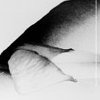 This disc reminds me a lot of the stuff Siouxsie And The Banshees were doing early on in their career, albeit much more dreamy and ethereal-sounding than the sometimes harsh Banshees. It is, of course, much more technically superior so far as recording and instrumentation went, too – twenty-plus years has made a lot of difference in how electronic instruments sound in general. But the feel and even the lead vocals are definitely similar, as is the depressing and gloomy subject matter, touching on love, lost love and death, sometimes all within in the same song.
This disc reminds me a lot of the stuff Siouxsie And The Banshees were doing early on in their career, albeit much more dreamy and ethereal-sounding than the sometimes harsh Banshees. It is, of course, much more technically superior so far as recording and instrumentation went, too – twenty-plus years has made a lot of difference in how electronic instruments sound in general. But the feel and even the lead vocals are definitely similar, as is the depressing and gloomy subject matter, touching on love, lost love and death, sometimes all within in the same song.
-Holly Day-
The Hangmen – Metallic I.O.U.
Label: Acetate Format: CD
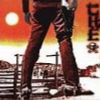 So this is the cool kind of Grungy, white boy Blues, a la early Stones or even more like New York Dolls, which I suppose most people wouldn’t really consider to be Blues at all, but I do, so there. Lots of great, gritty, raunchy songs about prostitutes, grave robbing, drug addicts, dark alleyways, all in the spirit of take-it-any-way-you-can-get-it fun. The guitar on this is really wonderful, and is where I think I get the most Rolling Stonesy feeling from, simple lead riffs with notes so well-placed they can compete with any technically-savvy noodler out there.
So this is the cool kind of Grungy, white boy Blues, a la early Stones or even more like New York Dolls, which I suppose most people wouldn’t really consider to be Blues at all, but I do, so there. Lots of great, gritty, raunchy songs about prostitutes, grave robbing, drug addicts, dark alleyways, all in the spirit of take-it-any-way-you-can-get-it fun. The guitar on this is really wonderful, and is where I think I get the most Rolling Stonesy feeling from, simple lead riffs with notes so well-placed they can compete with any technically-savvy noodler out there.
-Holly Day-
Har Mar Superstar – Har Mar Superstar
Label: Kill Rock Stars Format: CD
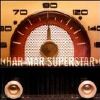 I’m not sure anyone outside of town will think this is as cool and funny as someone who actually lives in Minneapolis. Har Mar Superstar (named after the tiny, dorky Har Mar Mall in Roseville, MN) is made up of one schlumpy white guy whose main music projects are happy Punky Pop songs about love’n’stuff. This, his strangely most successful project, is a Rap and HipHop-style album with songs about all the women who are in love with Har Mar, his acute fashion sense (he dresses a lot like Mork) and how people in the Midwest should stop fighting one another and concentrate on spreading love instead; basically taking the theme of gangland territory music and making it applicable to farmers and machine workers. It’s really funny to us, but people outside of town might not get the joke.
I’m not sure anyone outside of town will think this is as cool and funny as someone who actually lives in Minneapolis. Har Mar Superstar (named after the tiny, dorky Har Mar Mall in Roseville, MN) is made up of one schlumpy white guy whose main music projects are happy Punky Pop songs about love’n’stuff. This, his strangely most successful project, is a Rap and HipHop-style album with songs about all the women who are in love with Har Mar, his acute fashion sense (he dresses a lot like Mork) and how people in the Midwest should stop fighting one another and concentrate on spreading love instead; basically taking the theme of gangland territory music and making it applicable to farmers and machine workers. It’s really funny to us, but people outside of town might not get the joke.
-Holly Day-
Harvey Milk – Life … The Best Game In Town
Label: Hydra Head Format: CD
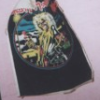 “Death goes to the Winner” opens the album with delicate vocals and guitar, but no album whose cover has a ripped poster of the Iron Maiden album Killers (Eddie with bloody hatchet in hand) can possibly avoid being metal for too long, and Harvey Milk delivers. The opening tranquillity is obliterated by a huge wall of stoner metal: pounding beats, sludgy chugging riffs, growling vocals, and screaming feedback.
“Death goes to the Winner” opens the album with delicate vocals and guitar, but no album whose cover has a ripped poster of the Iron Maiden album Killers (Eddie with bloody hatchet in hand) can possibly avoid being metal for too long, and Harvey Milk delivers. The opening tranquillity is obliterated by a huge wall of stoner metal: pounding beats, sludgy chugging riffs, growling vocals, and screaming feedback.
The cover is the only Maiden influence that I can spot. Musically, The Melvins come to mind. Harvey Milk has all the roughness, rawness, and haphazardness of a Melvins live performance: Life … The Best Game In Town sounds like it is about to fall apart and fuck up. Then out of nowhere they up the tempo and launch into frantic and intricate riffing with total wild abandon. Too dirty to be technical metal, they race on like Tool or Voivod dragged through a hedge backwards before collapsing into a buzzing mire of guitar drones. Definitely in the rocks like a bastard category, Harvey Milk have made an album that begs to be played really loud. MOAR!
-Alaric-
Earl Harvin Trio – Unincorporated
Label: Two Ohm Hop Format: CD
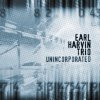 Jazz from Texas seems an unusual concept. Texas just throws up another bunch of musical stereotypes to me. But this is Jazz, of a kind, and was recorded in Austin. And this trio have played with all sorts of musicians, so why haven’t I heard them until now?
Jazz from Texas seems an unusual concept. Texas just throws up another bunch of musical stereotypes to me. But this is Jazz, of a kind, and was recorded in Austin. And this trio have played with all sorts of musicians, so why haven’t I heard them until now?
They have a slightly off-centre approach which reminds me in places of certain Jazz Rock or even Prog Rock trios of yesteryear. I could hear the playing of Steve Miller – the late English one – in Dave Palmer‘s electric keyboards. Maybe even a bit of Dave Stewart in his Egg days too. On parts of “Osiris” I thought of some of the lower key moments of Portishead but then Palmer launches into some cool improvisational interplay with drummer Harvin and Fred Hamilton who handles bass and much more. Like Hindustani slide guitar. More of that later.
Their take on Jazz is also about the creation of warm textures and funky beats, which may be a lousy way of describing what they do but “Mr Natural” is just that. Think of some of Mushroom‘s Jazzier output, maybe, but pared down a little. “Blue Fred” swings along with a lightness that owes a great deal to Harvin’s restrained cymbal work. It also showcases Hamilton’s acoustic bass, but briefly. They are not into the kind of extended bass and drum solos which can often turn the ears to stone and stop blood flowing. So what about the Hindustani slide guitar then ? Well, I’m no expert but the sounds on “Debashish” take us well out of Austin and along serpentine travel lines where Jazz meets its affinities with Ragas. Hamilton weaves fluid licks over the drones from samples and electric piano. The track evolves into a slightly fuzzy ambience as smoke thickens and images lose their clarity. But to remind us we are, in some sense, in Texas Hamilton gets out his banjo along with Palmer’s acoustic piano on “Lily”. It is hard to pigeon-hole this sound but I keep re-playing it.
They also make use of improvised pieces. OK, so Jazz is full of improv. but their approach is somehow less easy to classify. “Improv 1” is a rhythmically driven exploration that makes use of electric keyboard washes. The same may be said of “Improv 2” with its echoing electric keyboards and bowed acoustic bass. It is a little like some Free Jazz but there is a regular cycle of drum patterns to hold a rhythmic focus. Shades of Bitches Brew come to mind but without the density. So, if you like Jazz but feel jaded by it, this may be the thing to refresh you.
-Paul Donnelly-
Russell Haswell – Live Salvage 1997 – 2000
Label: Mego Format: CD
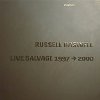 Is there a place in this world that has never been rained upon?
Is there a place in this world that has never been rained upon?
The planet of storms thunders from Mr. Haswell‘s machines as if the Deluge is upon us yet another time. Is it all pre-recorded, or do the different countries, times, venues and atmospheres inform this work? And how difficult is it to infusesuffuse a noise with one’s own personality? Coldsnaps, then a tornado and then the calm before another storm?
Slight tinges of memory encroach and encourage, tiny tones grabbing at the air like baby birds anticipating the feeding mother. The indexing of the tracks takes high pitches and blanks them into crumbling rumbles. The bubbling of magma and the last five minutes of Pompeiian life comes to mind. The wind over the landscape brings a swarm of icicles and can hoarfrost be so very far away? The hiss of the tape adds to the storms spewing from the speakers, and dialogue meshes with the occasional blaat and afteraction conferring. People sure do cough a lot.
Data chatters through the division of tracks and there is an overwhelming sense of dispersal and disbursal – the scattering of sound throughout the land. Yet it seems as though time is made more “realistic” with these sounds. 7 minutes seems like seven minutes. “To be played at maximum volume.” And so on. Details of the tracks are buried in the sheen of the packaging (digipack sleeve and CD surface) – to detail a world unseen, ignored, but there all the same?
There is something far-off and uniquely private about these sounds, as though Mr. Haswell holds a seashell that fits only his ear.
-David Cotner-
Haujobb – Matrix
Label: Off Beat Format: 2CD
Matrix is a fine combination of remixed tracks from last year’s Solutions For A Small Planet with added new material and a bonus sample CD thrown in for good measure. The new tracks are crunchy (‘Cross Fade’), Dub’n’Bassy (‘Hyperflow’ and ‘Horizon’), and trancy (‘Monologue’), interspersed evenly with the remixed pieces. Where Daniel Myer and Dejan Samardzic (Haujobb) tackle their own work, the trend is towards extended atmospherics and intricate percussive skitterings, while the guests (three refreshingly unfamiliar Eastern Europeans/Scandinavians) prefer to mash things up in a clubbier Techno or HipHop style, with Jan Wilking’s distinctly Prodigious ‘Amplified Distance’ a high point of the album.
-Freq1C-
Franz Hautzinger – Quartertone-Trumpet Solo
Label: Grob Format: CD
Slight and surreptitious words preface tunnelled sounds emergent as fuzzy little ducks from the woods. There is a sense of reinvention in the shuddering taps that come clean. A tubular whinging takes its place – saliva bobsleds down the track in a loogie luge. There is also a sense of humour (vitreous and good-natured) about the sounds. Circular breathing? A curling travel down, across and away, flowing on the membranes of simplicity.
Immediacy drips from the bell of the instrument as sounds snake out and break out. Your pipes duet with some later sounds, and up pops Nancy from her nap, awakened by a dripping tap. And I SWEAR this to be true: a siren in the background here in Los Angeles coincides with the siren in the background of the recording. Suddenly, fortuitously – coincidentally?
The crickets overflow and mate inside the scuffling instrument. Attracted, as they are, by the sound. But, it’s not as if these “other” environmental sounds are lost on the person playing alongside them. There’s quite a lot of listening occurring, it would appear…
-David Cotner-
A Hawk And A Hacksaw – The Way The Wind Blows
Label: Leaf Format: CD,LP
 Expanding on Jeremy Barnes‘ wild excursions into the depths of folk music from the old and new worlds and with Heather Trost bringing a Klezmer twist along with her vibrant violin talent, The Way The Wind Blows was recorded partly in Romania with members of renowned Roma group Fanfare Ciocarlia and in Barnes’ and Trost’s hometown of Albuquerque, New Mexico with fellow resident trumpter Zach Condon of Beirut. The immediate response to the music, regardless of history and biographicalndetails though, is a sense of marvel at the easy fusion of worlds which has been made here – the wheeze of the accordion and the blare of the brass swirled around by deliciously emotive strings which pull pizzicatos on the heartstrings with the mournful call of thousands of years of grind overcome by staggeringly lovely sounds.
Expanding on Jeremy Barnes‘ wild excursions into the depths of folk music from the old and new worlds and with Heather Trost bringing a Klezmer twist along with her vibrant violin talent, The Way The Wind Blows was recorded partly in Romania with members of renowned Roma group Fanfare Ciocarlia and in Barnes’ and Trost’s hometown of Albuquerque, New Mexico with fellow resident trumpter Zach Condon of Beirut. The immediate response to the music, regardless of history and biographicalndetails though, is a sense of marvel at the easy fusion of worlds which has been made here – the wheeze of the accordion and the blare of the brass swirled around by deliciously emotive strings which pull pizzicatos on the heartstrings with the mournful call of thousands of years of grind overcome by staggeringly lovely sounds.
The Way The Wind Blows is not an anthropological document of any one folk form frozen in time, more of a febrile immersion in many traditions which shudders with a brightly positive energy even when played in a minor key. Though the words are in English, they are largely chanted, or declaimed in the fashion of cantors, giving the songs an ancient quality which they possess in spirit if not necessarily in actuality. There are songs of warning and mourning, rapid-fire drums spattering staccato tattos as the violin keens. Who could not have their viscera stirred by the threnody of woe transcended, of regimes smashed and remembered as footnotes to a bloody Europen history which bubbles under still? There are songs to die to and to die for, but there are waltzes and more to elevate and dance the suffering away, brushed aside in a fusilade of drumbeats and bells, in tuba steps, piano paces and scorching brass, the asthmatic worm measuring breath on the listener’s behalf.
So when a South-Western New-Mex trill shatters the gloom and flutters of accordion brighten the pace with an irresistible fever, the oompah buzz of “Gadje Sirba” steps up the ryhthmic pace with a delerious motion, or the Turkish riffs of “God Bless The Ottoman Empire” call in yet another world to the dance, all is swept away in gleeful abandonment to the music – just as it should be. In the background of many tracks, beyond the harrumph and trills, there are telling whoops and calls, clatters, cackles and snippets of conversations and the sound of Moldova life rolling at its own pace – one which is swept up with the musics – and peoples – which This Is The Way The Wind Blows celebrates with a mighty passion which is in turn enveloping and heartstoppingly wondrous.
-Linus Tossio-
Hawkwind – The 1999 Party
Label: EMI Format: CD
Back in the hoary olde days of beards, guitars and Mellotrons, Hawkwind embarked on a tour of the United States – The 1999 Party Tour – and this old recording of the band at the Chicago Auditorium has now been released. I know there are a myriad unofficial Hawkwind releases of dubious quality but this one is digitally mixed and edited by Dave Brock and Paul Cobbold.
The packaging is wonderful: loads of old Barney Bubbles pics remixed with a Burroughsesque (Edgar Rice NOT William S.) feel about some of the artwork. There are also copious silly tour pics and a poster with a diagram of the solar system and its relation to the positions Hawkwind would take on stage and its relation to the music of the spheres. The space below the double CD compartment has a kewl pic of Stacia in spacey make up passed out with a can of Skol lager in her blue nail-varnished mitt. Being 1974 this is the proper Hawkwind: Dave Brock, Nik Turner, Lemmy, Simon House, Simon King and Del Dettmar, and it seems to be the tour to accompany their fab Hall Of The Mountain Grill album. Much of the material is old Space Ritual classics – Brainstorm, Master Of The Universe, etc. – unfortunately Bob Calvert was away on one of his extended creative/mad phases, so the declamatory duties have been filled by Nik Turner who has a tendency to overact and it all gets a bit Carry On Hawking at times. However, with the second CD opening with Lemmy’s The Watcher (later featured on the first Mötörhead album), the new material kicks in.
There is no subtlety to the Hawkwind formula (Nope, not even now, – Ed.); even with the addition of Simon House’s Mellotron and violin there is just a strange symphonic rush at the most arranged moments. As has been said before, Hawkwind were in many ways forerunners to punk; I believe John Lydon was inspired by seeing Hawkwind on acid to go out and form a band. But there is also a slightly ridiculous element of a buncha West London blokes going over to play loud acid music at the Yanks, and the Notting Hill accent has a certain half-awake drone to it which always pulls the Hawks back down to earth. The South London snap of the Sex Pistols is certainly more effective. Anyhoo, it’s an interesting historical piece for the collector but for anyone looking for the definitive live Hawkwind sound you still can’t beat Space Ritual Alive.
-Iotar-
Richie Hawtin – DE9 | Closer To The Edit
Label: NovaMute Format: CD,LP
 Following the 1999 mix Decks, EFX & 909 record, DE9 sees Richie Hawtin taking the mix album to a new level. Over 100 tracks were sampled, cut up, and trimmed down to bare essentials resulting in about 300 samples. Hawtin constructed DE9 from the samples like a jigsaw puzzle. The result is the purest of mix albums. Hawtin has refined it into the CD we have before us, removing impurities and getting down to the essence of tracks which emerge and vanish again in minutes.
Following the 1999 mix Decks, EFX & 909 record, DE9 sees Richie Hawtin taking the mix album to a new level. Over 100 tracks were sampled, cut up, and trimmed down to bare essentials resulting in about 300 samples. Hawtin constructed DE9 from the samples like a jigsaw puzzle. The result is the purest of mix albums. Hawtin has refined it into the CD we have before us, removing impurities and getting down to the essence of tracks which emerge and vanish again in minutes.
Richie Hawtin surely needs no introductions, does he? Plus 8 Records, Plastikman, DJ appearances, definitive Techno music, general all round electronic demi-god. He certainly isn’t resting on his laurels. Right now Hawtin is exploring a mixing system where samples are controlled with a vinyl ‘mouse’. DJs will be cue in and mix digital tracks in the time honoured way. Along with DE9, a sign that he is focused on the future of mixing. Where does he get the time?
-ap-
H.E.A.D – 97 98
Label: Caipirinha Format: CD
This one came to me with the words “Avant-Swingbeat” drifting implausibly alongside. And the press release? That says “Techno Cha-Cha”! I mean, what the FUCK? I meditated on these preposterous statements for a while, before deciding (as did the boy Skywalker at the end of The Empire Strikes Back) “No! That can’t be! That’s impossible!” Then I listened to the bastard.
Within seconds of the opening track “Little Asian Girl”, I realised that not only did both these genres exist, but that H.E.A.D. had already found a way of doing both! At once! And literally shitloads of other stuff too! ALL AT THE SAME TIME! And once I realised this stuff existed, I realised that it was WAY COOL. Bouncy but clever, artistic but fun (maybe even- dare I say it- mature but jaunty? Exactly whose vocabulary did I get this time?), cheesy only in the really-mental-grilled-Halloumi sense in which Yellow Magic Orchestra are cheesy. The kind of music little shiny robots in lamé would dance to if they were feeling particularly classy, but without losing a sonic adventurousness normally associated with the likes of Orbital or Weatherall. This is like Jazz-Funk played on surrealist instruments (even, at times, for example the bass/hiss rhythm section of “Too Packed To Rap, Too Drunk To Rock” reminding me of the late great Throbbing Gristle until some very sincere woodwind-type sound chills it out a bit) in fairly hot weather (I don’t know why that last bit but it just is, okay?), keeping just enough of a paranoid edge to prevent it lapsing into chin-stroking wine bar muso wankery.
Very cool, very clever, very classy. Like Carol Vorderman in shades smoking French cigarettes.
Only a fuck sight weirder.
-Deuteronomy 90210-
Headcase – Mushiness
Label: The Music Cartel Format: CD
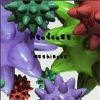 Pretty boring solo release from Curve‘s Dean Garcia, full of blips and muted voice samples and repetitive drum tracks. I guess it’s supposed to be Ambient, but I really don’t consider something ambient unless it actually puts me in a different frame of mind or changes the Ambience of the room I’m in. This just sounds like someone walked away from their keyboard to get a cup of coffee after programming a couple of sequences in to repeat ad infinitum.
Pretty boring solo release from Curve‘s Dean Garcia, full of blips and muted voice samples and repetitive drum tracks. I guess it’s supposed to be Ambient, but I really don’t consider something ambient unless it actually puts me in a different frame of mind or changes the Ambience of the room I’m in. This just sounds like someone walked away from their keyboard to get a cup of coffee after programming a couple of sequences in to repeat ad infinitum.
-Holly Day-
Heavy Q Connection – Heavy Q Collection
Label: Satellite Format: CD
Heavy Q Connection are from Japan, are into Psychedelic Rock music and like their Analogues squidgy. They like noise, they like extended drum workouts which teeter on the meandering side of Jazz-Funk; HQC have a fondness for loopy Trance sequences, demented Heavy Rock, arpeggiation and titles like “Chocolate Organ Player” and “Robot Wars.” They seem quite happily self-contained in their own personal musical universe.
Heavy Q Collection feels like a selection of missives from the studio jams of a bunch of Tokyo Space Cadets (apologies if they’re from Kyoto…), or from the acoustic reverbs of their toilet if “Bathroom Session” is anything to go by, despatched for the listening pleasure of discerning audio eccentrics everywhere. As such, it’s like the editied highlights of someone else’s collective trip, and quite often as likely to be dull as fascinating. Hardly the stuff of daytime radio play perhaps, but then wouldn’t the radio be more interesting if it did have material like this on offer? Shambolic, rudimentary, sometimes even lame – and these are qualities all bands should aspire to – and hence also engaging, honest and fun.
-Antron S. Meister-
Hecker – IT ISO161975
Label: Mego Format: CD
Culled from a selection of recordings made in 1997, following two years of extensive development by electronic artist-technician Florian Hecker, IT ISO161975 seeps uncannily from the speakers like so much aural ectoplasm. Initially felt more than heard and something of a test for the less well endowed in the amplifier department, the ever-so minimally named tracks (-1 to +4, via an IEC Mix of +3) are equally subtle in their construction.
Wrapped in a card sleeve which is a techno-fetishist’s delight of artfully-fuzzed digitalia, detailing the precise transfer rates of the mastering process, while simultaneously blinding through information too easily glossed over as background ephemera, the CD itself is a match for its cover. Pops, whistles and a window-rattling bass presence demand volume, and hence present a considerable danger to both reproductive equipment and neighbourhood relations – this is not a recording which would be best appreciated on a Midi system. The central heating might like it though.
For all the Hi-Fi enthusing possible about frequency response and sympathetic vibrations, what remains striking about Hecker’s minutely-crafted delve into the ones and zeros of digital-to-analogue conversion is the restrained power he lets slip with what is evidently a work of dedicted obsession. As with fellow explorers of the digital glitch and/or recursive analogue pulse, from Oval to Pole, what emerges is a deeply-layered warmth (which brings back those well-worn heating system motifs again) which is as comfortingly hypnotic as an open fire, without ever remotely sounding like one.
-Antron S. Meister-
Hecker – IT [R·] iso|chall
Label: Mego Format: CD
![[R·] iso|chall - sleeve](http://www.freq.org.uk/pictures/isochall.jpg) Being as it is the reworked plundering of Florian Hecker‘s delightfully poppy (and crackly) IT iso 161975, this album lets loose the talents of twelve like-minded perpetrators of miscegenated mish-mash on the ears of the metaphorically deaf and sympathetically enlighened alike. From Markus Schmickler to Otomo Yoshihide, GESCOM to the inevitable appearance of the estimable and ubiquitous Mr. J. O’Rourke of Chicago, [R·] iso|chall presents almost as many challenges to the listener as finding the correct keys to type the album title does on the average keyboard.
Being as it is the reworked plundering of Florian Hecker‘s delightfully poppy (and crackly) IT iso 161975, this album lets loose the talents of twelve like-minded perpetrators of miscegenated mish-mash on the ears of the metaphorically deaf and sympathetically enlighened alike. From Markus Schmickler to Otomo Yoshihide, GESCOM to the inevitable appearance of the estimable and ubiquitous Mr. J. O’Rourke of Chicago, [R·] iso|chall presents almost as many challenges to the listener as finding the correct keys to type the album title does on the average keyboard.
Most extreme prize goes to Francisco López for mixing down the track to such a low level that it requires boosting the volume to way beyond the usual levels even to hear that it still manages to resemble the nether regions of the plumbing system. Add in an overdriving fridge mechanism struggling to pump liquid coolant around a protesting system and it ends up like the Lithops version. Still, Holger Hiller does the unexpected, and produces an (admittedly attenuated) Dubbed-out bass-bang, echoed vocal mix, which is quite a remarkable feat given the source material’s general lack of obvious sources to hang a hook on – he seems to like doing this, having pulled off something similar with his contribution to the remix of Can‘s “Unfinished” a few years back.
Enough digression; this is an album which accretes detritus on top of acoustic swarf, re-interprets the obscured and mangles the slippery room-echo-sized remnants of sonic flux into plastic form of the ineffably estranged. And if that sounds like an exaggeration, try putting it on headphones and walking down the average urban street, or through the Jubilee Line extension underground to the Millennium Dome in Greenwich, or into a carnival hall of mirrors, and take note of the stochastic possibilities arising. Chaotic, futuristic and elusive in both the precise and more Heisenbergian aspects of those adjectives, the friends of Mr Hecker have taken his musci to the cleaners and put it through the mange several times over for a quantum rinse-out. Shrunk in the wash? Too much bleach? All steamed up? No problem, just enjoy the recyle setting and listen to the launderette sing.
-Marco Polomint-
Thomas P. Heckmann– Welt In Scherben 4
Label: Force Inc. Format: 12″
More functionality than Le Courbusier, more muscle than Nitzer Ebb (but much less hate), more single minded determination than the SAS after they`ve subsisted for a month on grass stew … and with a bloke in the middle who looks pretty much like Salman Rushdie. Yes, it’s Mr Heckmann back with a bang. Really, this is Rauschen 14 in a smaller dose, Mr Heckmann being one of the stars of the CD. The difference? I like this record, probably because it doesn`t go on for nearly an hour.
Whereas some people transform their Funk into an armoured car, Thomas P Heckmann has created the surgical implementation of Funk. It’s sharp, clinical, and precise, and if he’s not careful he’ll have a kiddie’s eye out with his Techno. I still wouldn’t want to listen to hours of this stuff – it needs moderation, it’s hardly diverse. That aside, I rather liked Mr Heckmann`s slab of vinyl. I`ve got this image of Star Trek‘s Lieutenant Data being the king of the dance floor to this one.
-E.coli-0137-
Hefner – Good Fruit
Label: Too Pure Format: CDS (1 of a 2 CD set)
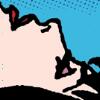 “Good Fruit” is one of those Indie Rock songs which works entirely well within its own genre, in this case bringing in a brass section among a reedy organ and some slow backbeats plus the guest vocals of the doyen of sweetly-sung refrains, Amelia Fletcher from Heavenly and Marine Research. “Good Fruit” starts slowly, then soars off into the upper reaches of hand-waving before a fade at the requisite Pop time of 3 minutes 27 seconds. “Jubilee” has a nice melody built around a harpsichordal riff, a shaker beat and backing vocal “ahhhs” from the band. A love song in all respects, straightforward and unpretentious.
“Good Fruit” is one of those Indie Rock songs which works entirely well within its own genre, in this case bringing in a brass section among a reedy organ and some slow backbeats plus the guest vocals of the doyen of sweetly-sung refrains, Amelia Fletcher from Heavenly and Marine Research. “Good Fruit” starts slowly, then soars off into the upper reaches of hand-waving before a fade at the requisite Pop time of 3 minutes 27 seconds. “Jubilee” has a nice melody built around a harpsichordal riff, a shaker beat and backing vocal “ahhhs” from the band. A love song in all respects, straightforward and unpretentious.
“Blackhorse Road” is much the most adventurous piece on the EP, using dripping water samples, a drum machine beat and some trundling analogue synthery of the buzzing variety. A sort of Electro swingalong tune, it’s effervescent enough in an instrumental manner and meanders off in several chunky beat directions from time to time, with the joyous sound of old cheap keyboards wibbling in from leftfield too. Bleep.
-John Palukha-
John Hegre – A Nice Place To Leave
Label: Dekorder Format: 3″CDS
 Taking solo steps beyond Jazzkammer and Kaptein Kaliber, Improv veteran John Hegre constructs three slivery tracks from microsounds and drones and hums. The first snickers quietly to the underground movement of electronic constructs and audibly-spacious tones. Itsy-bitsy glimmers sparkle to a shifting textural motion of drones which hold enough emotion; the sense of activities and nearby danger is palpable. As the CD moves into its second track (no titles are obvious), the threatening mood becomes claustrophobic, as big sounds envelop then fall by the wayside into a blank, expectant hiss.
Taking solo steps beyond Jazzkammer and Kaptein Kaliber, Improv veteran John Hegre constructs three slivery tracks from microsounds and drones and hums. The first snickers quietly to the underground movement of electronic constructs and audibly-spacious tones. Itsy-bitsy glimmers sparkle to a shifting textural motion of drones which hold enough emotion; the sense of activities and nearby danger is palpable. As the CD moves into its second track (no titles are obvious), the threatening mood becomes claustrophobic, as big sounds envelop then fall by the wayside into a blank, expectant hiss.
The eventual build into gentle pastoral washes is a slow uphill struggle – the sound of Sysiphus approaching – and the arrival is soon disrupted into jarring audio collage and neurosis-inducing pleasantry: just when is everything going to go haywire again? Severally and often is the answer, this section splintering into windswept crashes and propellor whirls. The final movement lumbers home to tranquility and eventual stasis, completing the disc with a gently-unfolding one-note rhythm.
-Freq1C-
Hell– Copa
Label: V2 Format: 12″,CDS
Somewhere in the Post Modern section of the Inferno, lies the circle of DJ Hell, a man so twisted as to consider that Barry Manilow rendered as a Nineties Disco Funk extravaganza would be worth releasing as a single to inflict upon the masses who still regret the original’s appearance. The sins of the fathers of the dancefloor are visited on the young – and serve ’em right too. Why should only the Seventies have suffered?
Kitsch to the Nth degree, sickeningly rushy, like a streamlined cocktail of mogadon and poppers laced with crack for the sickest of backwards edges, “Copa” is an awesome sound which fascinates like a passing accident – and is about as logically pleasurable, but can sometimes hold the attention to an unwarranted degree. By the time Phats & Small‘s or Abe Duque‘s remixes emerge from the tacky soup of pumping beats and onto the plateau of Discotheque smarm, it’s nearly too much to bear… nearly.
-Freq1C-
Herrmann & Kleine – Our Noise
Label: Morr Music Format: CD,LP
Thaddeus Herrmann and Christian Kleine‘s noise is a largely electronic melange made in the same Synthpop-referencing brand of Electronica as practised by the likes of Kreidler, with a similar nod to melodic musics of all kinds along the way. There’s a halting Indie sensibility which takes plucked guitar figues and loops them among breakbeats and tinkly keyboard lines, but then their more energetic influences kick in and things get gloopily propulsive, as “Her Tune” proves in a quite chunky cut-up manner.
Likewise, “Kissing You At 120bpm” rolls on a drum machine chug which celebrates the instrument as much as its cheery melody bubbles with the spirit of every Kraftwerk fan ever to lay hands on a sequencer’s quantize function. Very jolly in other words, and so Our Noise flows with the occasional twitter of skittish ambience like “Shuttle” to make interludes between well-rounded breakbeat solidity and more good time electronic grooves like the tumbling road movie Techno of “Headlights”. Major keyboard chords dominate, and there are lots of them circling, whirring and sweeping throughout the album in elevated style, bringing carefree happiness and a touch of nature documentary-style soundtrack blandness with them. Tracks like “Wonder” demonstrate the perils of using preset sounds and the relative thinness of FM synthesis before bubbling into heavily-phased life with a rhythmic rumble of some small epicness accompanied by Ariane Hensel‘s wordless vocals.
Hensel also sings Slapp Happy‘s “Blue Flower” with airy grace to a gentle guitar intro which is soon swept up in a welter of fuzz, distorted HipHop beats and general noisy fun before settling down to quiet-loud-quiet-loud mode. It’s moments like this which lifts Our Noise right up from the (admittedly above-average) bulk of the album, which while occasionally less convincing than it should be, is never dull.
-Freq1C-
Hexer vs. The Omega Men – Krush Grooves Cipher Volume 1. – Underground Resistance
Label: Krush Grooves Format: 12″
Hexer (AKA Myer of Groove Attack recording fame) drops another abstracted slab of Drum & Bass on the slipmat from the recess of his secret laboratory. All flashing snares and Dopplered, timestretched cymbals, “Underground Resistance” is the first in a series of Krush Groove‘s spaced-out breakbeat vinyl masterclasses, remixed on the obverse in soundclash style by those elusive Omega Men. Their take on the track racks the beat up several notches, with the low end spread further into funkier realms, with what sounds suspiciously like a slap-bass over the rolled-up and rinsed-out breaks, making for a far more energetic experience which revels in its own convolutions.
-Freq1C-
Hidenobu Ito – Bedroom In The Cage
Label: NS-COM Format: CD
Extra points for the sleeve material staticking to the lid of the case. Nice touch of the upsidedown side label. Note to all people wishing to send music to deejs – it helps immensely to note the running times of your pieces. On the sleeve notes, on a separate sheet of paper – whatever! Details can either be the bane of, or the bloom to, the documentarian. Please keep this in mind.
On the cover, a bluewhite, graphed item rests opposite a yawning child. Position of opposites? The presence of the child is somewhat suggestive of possible methods of operation in this music – at times, it is approached in a childlike fashion. Not childish – childlike. Odd samples rend the piece, and beats are truncated and not quite followed through. It’s like pressing the “seek” button on a car radio, or, alternating between the program selections (phono/cd/tape 1/video) of your stereo receiver. Could such an operation be done with a modicum of rhythm and thereby win the hearts of writers for The Wire everywhere? As far as fuck music goes, it’s fine at lower levels (because the plants can grow), or, a bit louder, it’s for all you avant-garde sex fiends out there. And I think I know who you are! There’s even sexymanspeak and uprightbass (?) on “A Whim.” Fabulous! Swangin’!
It’s a very attractive situation, this recording. It is asymptomatic of anything NS-COM has released so far – lots of piano, automotive repairs and the occasional screeching bits (guitar included) here and about. And samples. It even says so (“sample”) on the cover! Nothing like truth in advertising. Thumbs up, it’s top, four stars, and all that rot.
-David Cotner-
Higher Than God– Blackbox Architecture
Label: Sideburn Format: CD,2LP
xhibiting an exuberent, heady onrush of accreting beats and pieces, Higher Than God certainly has a lot to live up to with a name like that. Apparently conceived during nearly half a year of Black Forest exile, Blackbox Architect allows its creator the opportunity to move the hitherto unmoved in response to some decidedly Funky grooves. If the evidence of “Casino’s” chickawacka sparkle or the relaxed sub-Reggae groove of “The Discharge Of Brunner Schwer” is anything to go by, then maybe hermitic woodland living has given rise to an elevated consciousness for Mr. HTG – there’s a feel-good factor here of at least eleven.
If there’s one problem though, it’s the feeling that while the sense of enjoyment is apparent in the first couple of tracks, it’s never quite successfully transmitted beyond a generalized sense of well-being. “Blackbox Architect” itself is a mellow slide from analogue harmony into a Dub-space Lounge journey which is more like it; smooth and easy maybe, but close attention to detail prevents a regression into a more polished soup. Perhaps it’s all too straightforward for someone who has such an knack for producing glossy tunes, but when he really puts the effort in here and on “Brand Y” or “Maurizio Merli’s Beard”, it’s an engaging trip into the Jazzy breakbeat territory first mapped out by Squarepusher – with all the positive and negative points that apply regarding noodling virtuosity and chin-stroking too.
There are some nifty elliptical moves in “Nasi Goreng Hot Hole” or “End Of The Day” to leaven the mix, but it’s the jarring bass of “Nautic Obsession” which really breaks the prevailing mood, warping into low-end abstraction and textured shimmers, along with the aquatic TripHop of “Stroemberg Loft Parade,” before the inevitable return to stylish flute solos and the re-invention of the Jazz Fusion wheel. However, one last opportunity is taken to showcase the demented side of such technical mastery – “Time.OhOhOh.Time!” messes with linearity the way hard-disc editors were meant to, and finishes the proceedings with a resounding blast of stumbling pulses and electronic squiggles.
-Freq1C-
The High Llamas– Lollo Rosso
Label: V2/Alpaca Format: CD,LP
Remix albums come and go, shuffling the material of a hundred recording artists through the filter of another fifty or so… (random estimates, these). Here is Sean O’Hagan‘s oevre dissected (the tracks originating from the Cold And Bouncy album), cut and pasted by the likes of Mouse On Mars, who slip into full recycle mode to create a typically bubbly confection of disjointed horns and their favourite underwater squiggles with “Showstop Hic Hup”. Here too are Cornelius, blending the Easy Listening vibe of “Homespin Rerun” into a Dubadelic clockwork cascade of song fragments before accelerating into gloriously manic analogue overdrive, and Schneider TM, who tackles both of these source tracks and more to create a multilayered, exuberant Trance treatment of “Homespin Übershow” in complementary style.
It seems that “Homespin” is a bit of a remixer’s choice, as Kid Loco gets in on the act with an extended, langorous breakbeat Funk “Space Raid Remix”. As for Stock, Hausen and Walkman, their organic transplant is a stop-start affair which shows their consumate cut & paste skills off to good effect, while Jim O’Rourke typically edits hihglights from the whole album as a ride into gradually-disintegrating, space-age Lounge Minimalism territory, Pierre Henry-style. It’s left to the High Llamas to conclude with “Milting Tindmills”, which shifts everything back into a shimmering froth of watery strings and xylophones. Very nice.
-Freq1C-
Hikashu – 4 Trck Bootlg
Label: Angelika Koehlermann Format: CDS
Never underestimate the ability of Japanese bands to surprise and mystify. Hikashu manage to do both, by blasting forths a combination of chaep-keyboard pop and sundry scattershot sax lines, bursts of guitar noise and wind-tunnel choruses. “Yochu No Kiku” being a case in point – it’s like a return to the post-Punk era, with more ideas layered on top of each other than your average concept album in a methamphetamine rush. “Puyo Puyo” continues the major-key weirness, with a startling vocal inflection riding over a collision of drum machine and tabla samples, flecked with an enstranged meeeting of echoing keyboards and jarring noises and unnerving laughter.
Best of all has to be their version of “The Model,” reconfigured as a Cure-like ditty and rendered in Japanese for the full-on Karaoke effect – this is simply a work of ironic genius. Final track “Loosing My Future” allows the singer to show off his English for the chorus to what sounds like another cover, or maybe they’ve just got the semi-New Romantic schtick down pat. Whatever, it’s a uniquely off-kilter sound, never quite settling into mundanity, and there’s always something slightly awry in Hikashu’s version of the Pop method.
-Antron S. Meister-
HiM – Our Point Of Departure
Label: Fat Cat(Europe)/Perishable(North America) Format: CD
 The rhythms ride down on congealing delays and reverberation as the spirit of the Samba is spoken to, conjured up and otherwise fiddled with. Point of Departure, yes – it’s easy to get a sense of the voyage, the movement and the sincerity – but, what about the point of arrival? HiM album subsequent and perhaps entirely backwards-masked?
The rhythms ride down on congealing delays and reverberation as the spirit of the Samba is spoken to, conjured up and otherwise fiddled with. Point of Departure, yes – it’s easy to get a sense of the voyage, the movement and the sincerity – but, what about the point of arrival? HiM album subsequent and perhaps entirely backwards-masked?
Folding out the CD itself (in gesture to gatefolding and unfolding), the solar ripples extend unto the spaces between – the neverending conversation of the cocktail party? The uncertainty of the end of the recording? Circles can be seen in more ways than 360. And the recordings revolve like fucking – manic in hebephrenic panic and then resting, rising and then receding, pursuing its own tail like the puppy or the dyslexic. The final track lends itself to the prophesied backward-masking and driving through the dystopia in search of another car…
-David Cotner-
HiM – Many In High Places Are Not Well
Label: FatCat Format: CD
A band that seems to undergo constant evolution is HiM, a loosely conjoined collective of horns, guitars, bass and drums and other instruments. This release sees a development from their New Features CD with the line-up gathered around founder Doug Scharin expanded to 17 players – though not all at once. Theirs is a brisk groove-driven sound full of solid interlocked percussion, mobile bass with horns riffing and occasionally soloing. The opening track “Elementals” reminded me of Julian Bahulas‘ African Jazz/Funk outfit, Jabula, the horns locking in tight rhythmic unison over string bass and busy percussion.
An interesting addition to the textures is the kora playing of Abdou Mboup who is featured on a couple of tracks, including the title, where his strings shimmer and cascade. For the first time, there are vocals in English and French which add further texture and rhythmic diversity rather than conveying any strong lyrical message. The familiar slide guitar makes a few appearances adding a mellow flavour to the overall HiM ambience. Elsewhere a more distorted guitar floats in fuzzy sustain on “Perspective From A Slow Spin”, combining the expansive sound of the guitar and spectral presence of a trumpet is particularly effective.
Aside from the tribal rhythms there are some Dub-ish effects used sparingly and they bring a further spacey quality to the music and there is a lot of space here, despite the percussive drive of much of the set. Again, they leave me in anticipation, waiting to hear where they go next.
-Paul Donnelly-
HiM – New Features
Label: FatCat(Europe)/Bubble Core (North America) Format: CD,2LP
 Driven, but not dominated, by the double drum kits of Doug Scharin and Neil Turpin this contains an intriguing brew of Jazz, both free and melodically-based, controlled excursions into Dub and some slabs of Funk. There are shades of African and Latin musics and the drums really only indulge in a little workout on the opening track but there are plenty of other musical highlights from horns and guitar on this track too.
Driven, but not dominated, by the double drum kits of Doug Scharin and Neil Turpin this contains an intriguing brew of Jazz, both free and melodically-based, controlled excursions into Dub and some slabs of Funk. There are shades of African and Latin musics and the drums really only indulge in a little workout on the opening track but there are plenty of other musical highlights from horns and guitar on this track too.
“Out Here”, is a good example of this strong rhythmic attack with overlaid horns from Carlo Cennamo who moves from tight Latin-ish riffing to unleash some jubilant improvisation. Josh La Rue contributes some low-key guitar. Both horns and guitar shift through a dub sequence in the following track “Clouds” which seamlessly follows on from the previous one. As the title might suggest, this music drifts and alters shape constantly. La Rue does a lot to shape the piece with fluid, melodic guitar, then you suddenly become aware of the percussion to the fore. It’s not obtrusive, its just part of the shifting textures of these soundscapes. Then track 5 has crept up on you. “Were Once” starts quietly with bass and subtle percussion and gradually adds electronics and muted trumpet to the mix. It’s another example of the way the music mutates and allows the players space, foregrounding guitar one minute then the trumpet next. There is a spacey, Dub feel mixed with sounds not unlike Miles Davis‘ in the early Seventies. These three tracks are hard to separate and are, for me, the focal point of the album.
The final track, “Sea Level” is harsher and opens with some restrained free playing before kicking into a Prime Time or Pinski Zoo groove with squirming saxophone and snaky guitar over the drummers’ solid foundation. It builds in intensity with staccato riffing and ends suddenly and too soon for me. Not necessarily easy to classify, which is always a good thing, New Features is an exciting mixture of genres from a very cohesive musical unit.
-Paul Donnelly-
(A Second Opinion)
Much saxing up the gentle drumming that doesn’t awaken the person trying to have a nap on a hot autumn day. A live feeling, sensation of the spasm band (New Orleans division), as innocuous things are elevated to the level of Instruments and more has been stressed about Jazz than its sense of community; of communing. It’s all very cyclical and measured and it seems like they’re all having a good time.
There’s a certain breathy, naturalistic rhythm to the proceedings, and it’s strange to think that all these tracks were assembled from various places (in various lives) and times, and not all performed immediately, at once, fully-formed. Or, are they? And now a feeling of falling slowly through a glazed hole, with saxophone feeding the morphine drip, steady heartbeat of softdrumming all the way down…
Long curls away from Funk drive through the motor city street, startled by the occasional horn whispers from the alleyways and led astray further by the dulcet Rhodes. The dishwashing fuck music continues as you roll over in bed, caressing the Ms after a long night of enjoying things few and far between, looking out through a window you need to dust as you realise how much you wanted once to learn how to play drums, bass, alto sax, slide guitar and Moogerfooger. And then you turn, turn it up, and return to bed.
-David Cotner-
(A Third Opinion)
I’m not overly fond of this new HiM record, just because I was such a big fan of their previous work, which was much more wild-sounding and percussion-heavy – more tribal, I guess, and a lot looser and more chaotic. This record falls more into the realm of traditional Jazz, with tighter syncopation between the players-horns, bass, drums, and the occasional guitar – and the drums seem more like mainstream Jazz drums do on this, kind of pushed into the background to be more of a metronome for the rest of the band than a solid member in themselves. On the plus side, those potential HiM fans that have been scared off in the past by their unpredictable rhythms and the borderline bedlam inherent in those earlier recordings should feel right at home with this.
-Holly Day-
HIM – Remix Series 1 : Japan
Label: FatCat Format: 12″
This is the first in a series of three 12″ releases, a Japanese remix with USA and UK versions to follow. I enjoyed their New Features album in 2001 and this takes a couple of tracks from there plus one from the earlier Sworn Eyes too.
Nobukazu’s remix of “A Verdict Of Science” from the latter is a three section excursion that shifts from an arid piece of Electronica full of buzz, hums and clicks through speeded up beats into some fairly desolate and brooding trumpet. It’s atmospheric and has enough going on in terms of percussion loops and keyboards to maintain interest. There’s a constant whirlpool of electric piano swirling around, all very gentle and trance-inducing. I haven’t heard the original so can’t compare but I enjoyed the way the elements of this mix reminded me of some 70s Miles Davis and bits of Soft Machine. Susumu Yokota has given “Out Here” more of a House remix, laying the keyboards and trumpet over, or under, some driven percussion. The original is recognisable but has lost some of its brassy Jazz Funk in the process. I’m not complaining – both versions are fine by me. The remix of “Sea Level” by Ultra Living retains much of the abstract nature of the original but plays around with some of the various textures and atmospheres it created. In places it is more of a `Free Jazz cut-up mix’ to my ears but that’s OK too.
All these tracks display a diversity of approach using elements of HIM‘s sound and spreading them in other directions. Look forward to the next batch.
-Paul Donnelly-
Kim Hiorthoy – Hopeness
Label: Smalltown Supersound Format: CDS,12″
 Hiorthoy is working at the gentler end of the Electronica spectrum. The title of his EP is an apt reflection of the sounds he’s made, in other words, mostly reflective, optimistic and, like some of his art, a little haunting. The first track, “Mandarinerna” features chiming keyboards that ripple translucently, creating a sense of space and colour while there is a muted jazz sensibility evident on “Soliga Dagens Slappiga Trosor”. Here a double bass sample flexes subtly beneath the bright pools generated by the keyboards and the overall sound is soft and hazy, apart from the occasional percussive outburst. It reminded me of a less complex version of Zappa‘s synclavier pieces on ‘Jazz From Hell’.
Hiorthoy is working at the gentler end of the Electronica spectrum. The title of his EP is an apt reflection of the sounds he’s made, in other words, mostly reflective, optimistic and, like some of his art, a little haunting. The first track, “Mandarinerna” features chiming keyboards that ripple translucently, creating a sense of space and colour while there is a muted jazz sensibility evident on “Soliga Dagens Slappiga Trosor”. Here a double bass sample flexes subtly beneath the bright pools generated by the keyboards and the overall sound is soft and hazy, apart from the occasional percussive outburst. It reminded me of a less complex version of Zappa‘s synclavier pieces on ‘Jazz From Hell’.
“Alt Maste Bli Anorlunda” has an even softer ambience, like rain dripping into small puddles, or the gentle tapping of temple gongs. If sounds can be luminous then that’s what these are. The start of the longest track, “You Know The Score”, has an edgier feel which kicks in with some crisp drumming and harsher keyboard samples. Gradually though, it shifts into a fairly gentle mix of percussion and keys. There is something child-like about the world created in these little soundscapes and they provide a quieter alternative to the ferocity of contemporaries like Lasse Marhaug. It is interesting to compare the escapist tones of one with the all out attack of the other, exemplifying how the differing facets of the Norwegian Electronica/Jazz/Noise scene can co-exist fairly compatibly.
-Paul Donnelly-
Hometrainer – Tips For Professional Drilling
Label: Payola Format: 12″
Rather unfortunately, this EP does not consist of sampled power tools sequenced into an Electro floor filler – or if they are, they’re very well disguised. No, instead, it’s all rather bleepy, chirpy Electro instead for the title track, so maybe messers Schwaiger, Gretschmann and MC Shuttle (also known collectively on occasion as Console) are aiming for the DIY advertising market? “Weight Watcher” doesn’t really have much to do with slimming, and is a rather perky groover, swarming with buxxy loops and poppy blips and bass kick thuds, and a wave-yer-hands-in-the-air middle eight, assuming that anyone dancing the relaxed dance this track inspires could be so energetic. Still, it does crackle along at a nifty pace before stuttering off into the void, so no complaints there.
B-side number one “Ghost Mode” opts for the simple expedient of bouncing around with an off-kilter melody sounding as if it’s been played on an electronic kazoo through a vocoder and another chirpy little ditty on the higher frequencies. It’s very jolly, and quite disposable. “Nightliner” continues in mid-range drum-machine and warbling bass rhythm style, but at slower pace. It too is a tad off-hand`somehow, though no doubt put together with love. Actually, it’s probably the best track on here, becoming increasingly abstracted and shifting beats into odd backwaters before swarming bleeps dissolve everything into a breath-holding conclusion. Smart.
-Freq1C-
Honeyroot – Sound Echo Location
Label: Just Music Format: CD
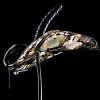 I’m really not sure what to make of this album. It harks back to a simpler and less cynical era of chill-out ambience and electronic Pop; opener “Losing My Mind” recalls the feel of the tracks between the hit singles on the KLF‘s White Room, only without the lyrical esoterica, and sets the tone for Honeyroot‘s nostalgic take on those years. By their account, those were days when luscious keyboards, 808s, cheap piano samples and helium-fuelled female vocal hooks about falling in love could get you far. But these days you can’t embrace such lightweight sincerity without at least having some self-conscious understanding that to do so is an affectation, at least if you want to be taken seriously, and I’m not at all sure that this self-awareness is in evidence here. But therein lies the problem; even if it were, it would be hard to reconcile with the innocent naivety of the music and the lyrics.
I’m really not sure what to make of this album. It harks back to a simpler and less cynical era of chill-out ambience and electronic Pop; opener “Losing My Mind” recalls the feel of the tracks between the hit singles on the KLF‘s White Room, only without the lyrical esoterica, and sets the tone for Honeyroot‘s nostalgic take on those years. By their account, those were days when luscious keyboards, 808s, cheap piano samples and helium-fuelled female vocal hooks about falling in love could get you far. But these days you can’t embrace such lightweight sincerity without at least having some self-conscious understanding that to do so is an affectation, at least if you want to be taken seriously, and I’m not at all sure that this self-awareness is in evidence here. But therein lies the problem; even if it were, it would be hard to reconcile with the innocent naivety of the music and the lyrics.
Take “Sweet As Honey” for example. This could almost be the archetype of candy-coated techno-pop that CJ Bolland so mercilessly turned on its head with the manipulative and materialistic “Sugar Is Sweeter”, but that was years ago, and our tastes are more mature now, hence the cloying aftertaste and the sensation that one’s teeth are probably rotting in one’s head. Well, they are called Honeyroot, but perhaps the unashamedly ersatz taste of Nutrasweet is more palatable today, if one insists on one’s Pop being served sweet and bubbly. The orchestral interludes on tracks like “Falling” and “Blue Space” offer too-brief relief from all the whooh-baby-yeahs, and “Sound Echo Location” itself keeps the vocals to a cut-up sample and explores the band’s Ambient-Techno influences a little more, but these highlights are few and far between.
As an addendum, the CD has been reissued to include Honeyroot’s somewhat startling single, “Love Will Tear Us Apart”, which has so little in common with the rest of the material that I had to double-check that it was the same band. It was never a cheery song to begin with, but their take on it is far more downbeat than the original, and delivered in a sombre tone similar to the version of “Mad World” on the Donnie Darko soundtrack. It’s worth trying to find the single though, especially since – with a copy of the title track thrown in too – it contains most of the good bits from the album but without the danger of giving you diabetes.
-Andrew Clegg-
Robert Hood – Internal Empire
Label: Tresor Format:2×12″
Oh yes, do I need to say anything else? I`ve ranted on about Tresor before – Tresor Club DJ Pacou`s Symbolic Language Remixes – and how can things go wrong when Robert Hood gets behind the wheel? I won`t bother to answer that. For those who don`t know, Hood is Mr Mill’s stable mate, co-conspiritor of Axis Records. Check out All Day Long on M-Plant – or why not check Intenal Empire too? His Techno isn`t quite a brutal and bulldozering as Mills’, and it sounds a fuck of a lot more minimal and sparse. Techno doesn`t get much more abstract or clinical.
Robert Hood makes Techno that sounds like a tone dialer on acid. Having said that, this isn`t just an excersise in minimalism that needs a PhD to appreciate. “Minus” conjours up sweeping synths and groovesome beats that – dare I say it – have a nice urbany Housey feel – all with Hood`s charismatic quirkiness. For what it’s worth, my fave has to be “Chase”: behind the sharp Detroit sound the bass drum establishes martial law with a host of alien sounds. “Rek” is the most minimal and I`m not sure where I stand with it. Is it too minimal? Is it the track where Bob popped out to make a pot of coffee? Or do I need to alter my mental state to truly appreciate it? Time, and some other things, will tell. Rumour has it he’s about to release another slab on M-Plant, so keep listening. Go on, you know you want it.
-Alaric Pether-
The Hope Blister – Underarms
Label: 4AD Format: CD
Drawn from a series of instrumental versions, discarded edits and different mixes from the Smiles OK album, Underarms (which is quite an evocatively unsettling title) is available only via mail order from 4AD. As usual, the packaging is a lovingly-crafted part of the whole deal, and here the usual 4AD standards have been exceeded in the shape of a cunningly-fashioned gatefold which takes the humble Digipak® into new realms of luxury.
The music itself is a quite stunning confection of cello, violins, viola and bass guitar, droning on with some gorgeous drones, overtones and sampled sounds, from the rain of “Sweet Medicine” via the shimmering streams of “Friday Afternoon” and into the langourous reaches of reverberating plateaux of “Iota” and revisited in the vibrant harmonies of “Sweet Medicine 2”. There have been fewer better examples of the fun and frolics available with a digital delay, a string section and the belief that simplicity is sometimes enough than the compositions of Ivo Watts-Russell, John Fryer and Laurence O’Keefe who make up the writing section for The Hope Blister.
Like taking a string section into the Dub laboratory, to elongate and twist the already powerful sounds of their instruments, what emerges is something halfway between desolate Ambient melody and abstract soundscape, with sound hovering between the stasis of drone and the caverous relays of echo and reverb. “White On White” has a particularly thunderous appeal, with a floor-shaking bass presence and the impression that a host of angels is about to materialise – but these aren’t the greeting-card variety, but more akin to those of the Old Testament and/or Milton – not forgetting that Lucifer started out in heaven too, and was always something of an ambiguous figure.
-Antron S. Meister-
Horace X – Sackbutt Folk Spoil Sunday
Label: Mahajeti Format: CD
 This jumped out of the speakers at me and is still doing it. A rampant mixture of Irish/Indian fiddles, Jazzy/Eastern European saxophones, Ragga ranting, samples and drumming that propels the whole thing at breakneck pace. It’s not just another ragbag of musical styles slung together and underpinned by a set of dance floor beats. In fact, I don’t know what it is. But it works wonders on jaded ears.
This jumped out of the speakers at me and is still doing it. A rampant mixture of Irish/Indian fiddles, Jazzy/Eastern European saxophones, Ragga ranting, samples and drumming that propels the whole thing at breakneck pace. It’s not just another ragbag of musical styles slung together and underpinned by a set of dance floor beats. In fact, I don’t know what it is. But it works wonders on jaded ears.
The opener “Bad Lies” gives you some idea of what to expect ; riffing baritone and tenor saxes from Pete Newman and Hazel Fairbairn‘s electric fiddle whipping up a demented Balkan/Irish jig over Mark Russell‘s tricky drum figures. And joining all this, the energetic verbals of Poor White Trash and Terminator Bones rapping and ranting. It tears along and goes into another flat-out routine in “Blind Eye” featuring a vocal sample of, I do believe, Ann Widdecombe‘s mellifluous tones, which are fortunately elbowed out of the way rapidly by Horace‘s resident vocalists and steaming sax and fiddle again. Just catch the way Newman’s clarinet soars over the ranting voices and drums, for instance, and you’ll experience a fraction of the excitement this lot can generate.
The mood is slightly cooled down for “Darkness Falls” or at least the rhythms relax a little. Again Newman’s clarinet weaves around the massed strings that make me think ‘Turkish’ as in baths and Delight, I guess. “Dreams – Half Empty” goes full tilt into a neo-Punk style with guest guitarist Neil Byer giving it some thrash alongside the dervish horns and fiddle. An exuberant clash of styles and rhythms. You might think a title like, “Izuaint” refers to an exotic music , dance, refreshment or even the name of a place where such things may happen. Of course, it refers to ‘Is you is or is you ain’t my baby’ , a song from the Jazz age or later. Whatever. This has some of the most melodic and percussive playing from Newman and the whole ensemble kicks along in a Balkan Jazz Reggae groove as the refrain is chanted by guest vocalist Cathy Coombs.
This is just a sample of what’s on offer here on this pre-release copy. Apparently it will be technically polished up for final release. The only thing I’d want now is to see them ‘live’ and soon.
-Paul Donnelly-
Bill Horist & KK. Null – Interstellar Chemistry
Label: Beta-Lactam Ring Records Format: CD
 As is to be expected from two such luminous improvisors as Messers Horist and Null, Interstellar Chemistry ripples out of the starting gate with abandon, flickering into immediate life with all the energy and chaotic diversity that decades of combined experimentation provides. However, where the duo have been best known for their guitar improvisations, this album is decidedly more electronic in atmosphere.
As is to be expected from two such luminous improvisors as Messers Horist and Null, Interstellar Chemistry ripples out of the starting gate with abandon, flickering into immediate life with all the energy and chaotic diversity that decades of combined experimentation provides. However, where the duo have been best known for their guitar improvisations, this album is decidedly more electronic in atmosphere.
Based in source material from KK.Null then reprocessed and extended by Bill Horist, the twelve tracks lurch with a bleeping, trebly emphasis around the sonic houses. The process is made evident and upfront, as the digital artifacts and analogue detritus battle for acoustic space and attention. One is never in doubt that this is music shoved through the electronic mangle, and it positively glories in the interplay of tonalities more frequently regarded and unwanted byproducts of sampling technology, digital effects units and the like. The ticking rhythms and whale-cast guitars of “Multi-dimensional Erosion” or “Go, Non-go Astronaut”‘s hypertrophied fragments shudder and intertwine to a trickling chirrup, for example, pouncing from motif to motif in a heady progress that seems to have a kind of purpose behind it, but an instinctual one rather than being rationalist in nature. A track like “Feast Of Heathern” rolls out the pagan rhythms with Pannish glee, flutes and scurrying electronics flickering with urgency which is quite breathless and even invigorating.
There are more ordered drum machine and percussion-based tracks too, and ones which twinkle with discordant guitar strings plucked in alternate tunings which would make John Fahey proud. The fumbling, tumbling effects wheeze and cavernously melodic, crumbly-rockface distortion of “From Elsewhere” is one such, while the backwards harmonics and slow machine beats of “Pinebox” drift off in Post-Rock directions before collapsing into sludgy mechanistic reverberation. Likewise, plangently out-there skimmer “Luminous Lullaby” is a piece sure to provoke accusations of noodling and/or inability to play in ears and minds unfamiliar with the possibilites detuning has to offer. Much the same aspertions could (and probaly will be) levelled at the whole of Interstellar Chemistry, which simply is not destined for casual listening on the whole. Thankfully, because the moment this sort of whirling, chaotic improvisation gets swept up in the tide of advertising, televisual trailers and station identification, bang goes another nail in the coffin of experimental music’s uniqueness.
-Linus Tossio-
House Of Wires – Monogamy
Label: Plastiq Musiq Format: CD
 Electronica in a very Eighties sense of the word, with more than a touch of the Underworlds. Done by Christians. Oh, a proper review? Okay.
Electronica in a very Eighties sense of the word, with more than a touch of the Underworlds. Done by Christians. Oh, a proper review? Okay.
I have to confess, I love that whole dodgy Eighties electronic thing – and I’m also quite partial to nderworld. So are House Of Wires (great name, incidentally) as far as I can tell. Nowhereis this more apparent than on opener “Away”. By track two, “World Of The Future”, they’ve decidied this qualifies them to start breaking out the insistent, infectious comedy horn noises and some Visage-style vocals over the top. And the funny thing is, they’re not far wrong. It all works better than it has any right to, especially when it’s all wrapped up in a big mechanical framework like this one. Odd. “Mad At The World” starts off like ver League‘s “Don’t You Want Me” before deciding Basildon’s preferable to Sheffield and pretending to be Depeche Mode circa “New Life” but with instruments from the Violator era. “Your Side Of The Mask” on the other hand, does that slow, atmospheric Electro vibe, with electronic wails and squishes competing with that indefinable pipe organ/loads of people going “ooo” sound that I personally think is underused these days.
A strange listen overall really, though a pretty rewarding one – if your sense of temporal awareness can cope with a band these kind of songs in this decade (indeed, Millennium) but also lifting quite heavily from modern Electronica. If you ever liked that kind of stuff, you will probably like Monogamy as much as I do. If it isn’t, or you didn’t, then you’re probably the sort of person who’ll laugh at my Japan T-shirt and extensive collection of Strawberry Switchblade vinyl, thus forcing me to remove your eyes with skewers and piss on your sofa. Yeah, you heard.
-Deuteronemu 90210 or thereabouts-
Hovercraft – Experiment Below
Label: Mute/Blast First Format: CD
From the first attachment of the electrodes, we know this is gonna be a weird one. First we get a spooky guitar echo intro (think Godflesh‘s “Flowers” only more minimalist), then all hell breaks loose. We’re in Terminal Cheesecake territory, only I get the impression that this time round, noone’s laughing. It sounds like Skullflower have jumped Mogwai and replaced all their quieter Slintesque bits with interlude dropouts of a band biding their time on an echoey bit, all the while working up the anger and psychotic fury to kill the quiet bits once and for fucking all-
And then it all goes eerily quiet again.
And that’s just the first track.
There’s something sinister about all this, not least the fact that instrumental distorted guitar music always sounds like it’s being made by big scarey men who you can’t quite see but know don’t really like you very much.
These are tracks that build slowly and creep up on you. When they do kick in suddenly (like in “Transmitter Down”) it’s with less a sense of relief than a sense of urgency. This is music being played slightly faster than it would like, but not fast enough to stop it working. And with crackly noises and weird effects throughout, in case you’re feeling too comfortable. A less cyber-thrash, more… more medical version of “Pure” era Godflesh at times, but with less angsty shouting and more headfuckery. “Benzedrine” just chucks white noise and clicking in our faces when we least expect them, before tying us up on a beach made entirely from static and leaving us a bomb, only to have us abducted by aliens at the last moment. Even when Hovercraft are at their most ambient (or to use Kevin Martin‘s far more appropriate term “Isolationist”) there is still the level of intensity more appropriate to the Manson Family creepy-crawling the Tate/LaBianca houses than to anything resembling relaxation. You just know that at any minute, things are gonna get a lot madder than they were last time things got particularly mad. Tracks bleed into each other, each building around the discarded remnants of the last before chucking them away and doing something madder. These aren’t sounds that have been created, they are what’s left after you have chiselled and carved your way around an big chunk of the noise that was there at the start of the universe. Big sculptures of really scary people that are being thrown at you.
All of which begs the question “why the name Hovercraft?”
-Dr. Deuteronomy (90210, PhD)-
Howlin’ Andy Hound – The Electric Dreams Of Howlin’ Andy Hound
Label: Garage D’or Records Format: CD
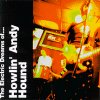 Howlin’ Andy Hound, former frontman and guitarist for Minneapolis’ Viceroys, writes some of the meanest-sounding Garage Rock out there today. This music splutters and whines its way through coolly sleazy songs punctuated by enough repeats of the word “baby” and “oh yeah” to make me want to start the disc over just to count exactly how many times he uses the words – not that I have any complaints about it. I just like to count things. Accompanied by Jacques Wait on bass and Travis Smack Ramen on drums, this band is a must for aficionados of bands faithfully following in the tracks laid out by the MC5.
Howlin’ Andy Hound, former frontman and guitarist for Minneapolis’ Viceroys, writes some of the meanest-sounding Garage Rock out there today. This music splutters and whines its way through coolly sleazy songs punctuated by enough repeats of the word “baby” and “oh yeah” to make me want to start the disc over just to count exactly how many times he uses the words – not that I have any complaints about it. I just like to count things. Accompanied by Jacques Wait on bass and Travis Smack Ramen on drums, this band is a must for aficionados of bands faithfully following in the tracks laid out by the MC5.
-Holly Day-
Huffamoose – I Wanna Be Your Pants
Label: Shanachie Records Format: CD
 The first song on this record is exactly like I wish the rest of the record had been like – funny, upbeat Pop music with a definite self-deprecating slant. “New Hit Song,” the album’s single, is a great song about a guy whose dad wrote a hit song and invites his son to tour with him, and damn, if it ain’t a knee-slapper. I’m a fan of knee-slappers.
The first song on this record is exactly like I wish the rest of the record had been like – funny, upbeat Pop music with a definite self-deprecating slant. “New Hit Song,” the album’s single, is a great song about a guy whose dad wrote a hit song and invites his son to tour with him, and damn, if it ain’t a knee-slapper. I’m a fan of knee-slappers.
The rest of the album, however, is more like what I remember from Huffamoose‘s previous LPs, falling somewhere between Psychedelica and acoustic coffeeshop Rock, which is okay in itself but just not my favorite type of music. Boo for me. I can say, however, that I love the way this is recorded, I especially love the way the vocals sound – I just wish they’d made more borderline-novelty songs like the previously-mentioned first track for this record.
-Holly Day-
Jonathan Hughes – Trillium
Label: The Foundry Format: CD
Pulses and vibrant electronic atmosphere cradles the speakers in gentle waves and this is the kind of music that gives solace to those locked up in prisons across the nation – if broadcast, if heard. It’s a revelatory gesture when fuck music consoles those who fuck, and the truly fucked. I find it fascinating that compact discs are becoming more and more aromatic these days – this one smells of maple syrup, like the Transparency label discs do. Although not always obvious at first (or at all), all the tracks on this CD are in the time signature. Trillium is neither a radioactive isotope nor a newly discovered planet – it is a three-petaled flower in the lily family. Hence the hint of an eyeball – echoes of the iris – luxuriating through the album artwork.
It’s a collection of sounds that is sweeping and yet simultaneously intimate, reminiscent of something almost-forgotten. It’s like a word misheard, an unidentified sigh – a very gentle reminder that some things are not always as we define them. On “Lua”, the beats enter into the equasion, in the aforementioned time. It’s Waltz-time, and occasionally short voices drift through a Sargasso sea of aluminum-tainted memory. “Heavy Water” continues the rhythm but in a softer way, as though not to make the baby cry. And why am I re viewing these things? What about baby?
It’s a little like watching those old films in slow-motion of flowers expanding, growing outward, again and again, shuddering into the rarefied air, wilting, and starting anew
-David Cotner-
Huntingtons – Plastic Surgery
Label: Tooth And Nail Format: CD
 Tribute bands. Yeah, you know the fuckers. Dress like `em, look like `em, act like `em, only play their songs (unless you count Björn Again, but they’re shit so I wouldn`t bother). Apart from the Huntingtons. Dress like The Ramones, look like The Ramones, act like The Ramones, even play with Joey Ramone, but sing their own songs (okay, so they have done a couple of albums of Ramones covers, but who the fuck hasn`t these days?… um, don`t answer that.). Admittedly, these occasionally have names like “I Wanna Be A Ramone”, but then isn’t that a feeling we’ve all had at some time or another?…
Tribute bands. Yeah, you know the fuckers. Dress like `em, look like `em, act like `em, only play their songs (unless you count Björn Again, but they’re shit so I wouldn`t bother). Apart from the Huntingtons. Dress like The Ramones, look like The Ramones, act like The Ramones, even play with Joey Ramone, but sing their own songs (okay, so they have done a couple of albums of Ramones covers, but who the fuck hasn`t these days?… um, don`t answer that.). Admittedly, these occasionally have names like “I Wanna Be A Ramone”, but then isn’t that a feeling we’ve all had at some time or another?…
Maybe not, but the point still stands. And that point is: to paraphrase a recent episode of Buffy, such an endeavour may seem pointless, but it is in fact totally pointy – you want your bubblegum Pop with just a hint of leather-jacketed danger? You want tunes you can hum but which still crackle and fizz like prime-time Rahk’N`Rawl? You want stuff that rocks while still being lots of fun, essentially good-natured but still wearing FUCKING SUNGLASSES INDOORS? You want The Ramones but with a post-Modern deconstruction thang going on? (Okay, so maybe the last one`s stretching it a bit, but I don`t think anyone noticed.)
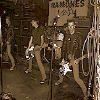 This isn’t a bunch of kids trying to cash in on someone else’s success. This is an honest-to-God tribute, a pastiche done not for money, or irony, or anything else ending in `y`, but out of good, old-fashioned down-home enthusiasm. Tongues may be in cheeks (oo-er!) but chins are definitely not beeing stroked. Gum is being chewed. Monitors are being stood on. Anyone who even attempts to be all boring and grown up is told to fuck off (although probably in a much more good-natured way). This is music from an alternate dimension where they’d even get The Ramones to do the music to Xena. (Altogether now- “Xena is/ A warrior princess/ Xena is”… well, I can dream, can`t I?) And the News. And probably Grange Hill too, if they could get away with it.
This isn’t a bunch of kids trying to cash in on someone else’s success. This is an honest-to-God tribute, a pastiche done not for money, or irony, or anything else ending in `y`, but out of good, old-fashioned down-home enthusiasm. Tongues may be in cheeks (oo-er!) but chins are definitely not beeing stroked. Gum is being chewed. Monitors are being stood on. Anyone who even attempts to be all boring and grown up is told to fuck off (although probably in a much more good-natured way). This is music from an alternate dimension where they’d even get The Ramones to do the music to Xena. (Altogether now- “Xena is/ A warrior princess/ Xena is”… well, I can dream, can`t I?) And the News. And probably Grange Hill too, if they could get away with it.
It’s official – (Punk) Rock and Roll is fun again. Stop looking so fucking serious and join the party.
-Deuteronemu 90210 is a Punk Rocker, apparently-
The Huntingtons – Songs In The Key Of You
Label: Tooth & Nail Format: CD
Let’s just get one thing straight here. The Huntingtons Rock. But not like a bastard, absolute or otherwise. The Huntingtons Rock – kind of wholesomely. And I don’t mean that to sound as bad as it does. What I mean is, this isn’t your snorting-coke-off-midgets, sacrificing-groupies-to-Satan kind of Rock. This is more American high school rebellion. Yes, we’re on that Ramones trip again.
For anyone who’s never heard The Huntingtons, let me say right now that They. Love. The. Ramones. A lot. They’ve done their time as a Ramones tribute band, and they’ve even done their own songs about The Ramones. In the style of The Ramones. (The classic “I Wanna Be A Ramone” is, well, a classic.) So, post-Joey, what are his favourite disciples like now? (The late lamented Joey R. was quite a fan, apparently.) Basically, it all comes down to whether you like this kind of thing. Personally, I do. I think it Rocks. Yes, there’s lots of “wuh-uh-oah” choruses, chugging guitars, and I imagine they were all wearing biker jackets while they were playing. With lyrics like “I could love you forever, yes it’s true/And I’d stop watching stupid cartoons for you” (“That Guy Stole My Girl”), it’s really hard not to love an album like this. It’s dumb, yes. It’s fun. And it’s very well done. Pop Punk, indeed, but a world away from “Emo” or “emu” or whatever the fuck they call it – it’s far too much fun for that – and never descending into teen angst bullshit (with or without a body count) either.
Okay, so it’s the kind of thing you’d hear at the high school prom on Buffy or something, but it’s a fuck sight better than most of the bands that feature in scenes like that. And you just have to love a song called “80s Girl” that starts with a very ’80s synth riff – “I want a girl with a new wave hairdo” indeed! (And then starting a verse with “Whatever happened to Molly Ringwald?”) OK, OK, I know there’s never any justification for this kind of thing, but I LOVE it, damn you! It’s FUN! Remember FUN? You know, like that FUN kind of stuff?
Anyone interested in signing my petition to get the Huntingtons featured in a prom-related episode of Buffy, I’ll be hanging out by the coffee bar, sneering and smoking a (low-tar) cigarette.
-Deuteronemu 90210 is a Punk Rocker-
Hydroplane – Hope Against Hope
Label: Drive-In/Bad Jazz Format: CD
Hydroplane come on soft with a melody straight out of a Nick Cave song-“…O Lucy, can you hear me, when I cry and cry and cry…” However, the similarity to Mr.Cave does stop there. Hope Against Hope is just under 35 minutes of really beautiful synthesized compression and pristine vocals, benign lyrics, soft strummed guitar. Clear resonance and wafting space sounds make up a collection of completely non-challenging songs just this short of being boring. Really it is all too pretty to be dull, perfect date music.
Where these songs fall into being simple, they don’t fall too far, though I did examine the labeling to see if Nutrasweet was on the ingredients list. It wasn’t, and not much other information is either. I find listening to this CD somewhere in between Stereolab and Julie Cruise – floaty, airy, spacey, nice. Surely more interesting than the former, and less gossamer than the next. There is so much bittersweet prettiness here that this could be labeled girly music, but I can easily imagine a boy or two I know nursing heartwounds with Hydroplane soundtracks. One song, “Station to Station” could possibly be some sort of Bowie tribute, or it might just be a nice little exercise on the wave generator. Whatever the case, it does seem to bring some welcome relief to the far too perfect singing on every other song except “Summer without sun”, and “Too far out”. And the singing is perfect, so much so that I don’t imagine Ms.Hydroplane needing a lot of engineering or effects on her lilting voice; it is all so open and clear and immodest.
Everything on Hope Against Hope is completely balanced and blended, very easy to listen to, or play in the background. The artists involved are obviously well trained or well skilled or at least well talented. I don’t get the feeling the Hope Against Hope causes anyone a stretch, but it also won’t cause too many yawns.
-Lilly2000-
Hydroponics In Dub – Let The Light Shine
Label: Dubhead Format: CD,LP
Emerging in Hydroponics guise, Let The Light Shine is another dub missive from the mixing desk of bush chemist Dougie Wardrop. With melodica courtesy of Chas, this album coasts along quite nicely at first in a stately stepping style as the opening title track announces both the group, timestretch-style, and the record itself. Then it gets more uptempo, occasionally to the point of queasiness, and the trip into the celebration of making music to take cannabis sativa to really sets in, stretching the Conscious Sounds palette as established by Wardrop over the last decade into further extremes of cut & paste Dub.
There’s much circuitous echo-box trickery dispayed, and from time to time the percussion and other samples eventually disappear into a blur of delay, flange and phase so much that it’s enough by itself to get the listener quite righteously stoned without recourse to skunk. With generous bass rhythms riding in hypnotic tandem with tightly-controlled drum placements and repetitive loops, the fourteen tracks here emphasise the studio effects in modern digital Roots fashion, though the melodica interventions bring tuneful swirls of epic dimensions to the mix, enlivening the sometimes very heavy loops and picking things up nicely.
A heady blend of the deepest of warm bass and shimmering electronics, Let The Light Shine is quite single-minded in its pursuit of the most psychedelic of Dub effects, sometimes apparently for their own sake – which is no problem. The results are appropriately euphoric on occasion, and some caution should be excercised while listening to this set – beware of operating heavy machinery, for example. Time tends to slow and speed up again with the bass. It may cause drowsiness, drooping of the eyes, intense bursts of concentration on the nuances of a particular hi-hat trail, and pangs of experimental hunger.
-Antron S. Meister-
